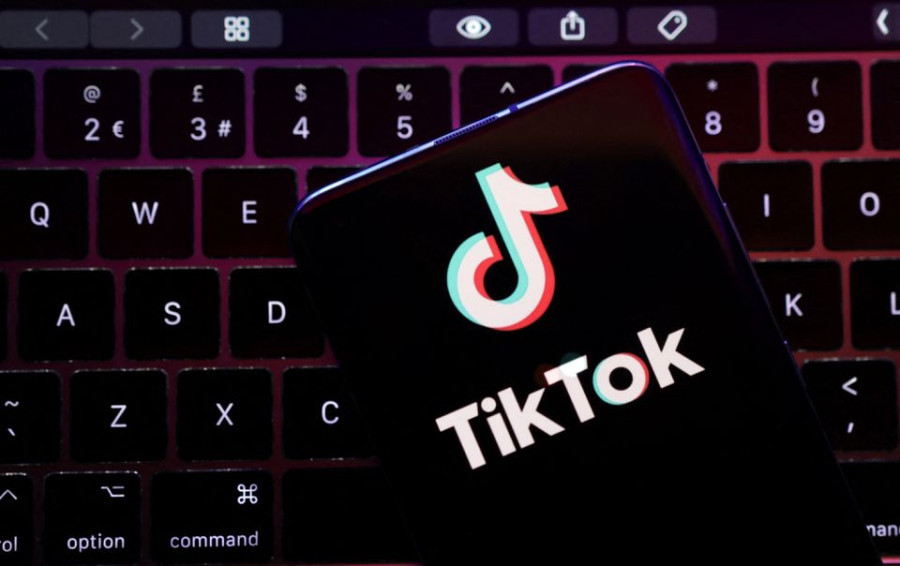Internet traffic grows sharply in Nepal after TikTok ban
The growth suggests users are exploring loopholes to bypass national restrictions and access the platform.

By Krishana Prasain
Internet traffic has grown sharply soon after the government banned the popular social media platform TikTok, suggesting that users are exploring online loopholes to access the app.
Internet service providers and experts say TikTok accounts for nearly 40 percent of internet bandwidth consumption in Nepal, and when it is banned, the internet consumption should have nosedived.
But to the surprise of many, internet traffic has grown by 20 percent after the ban, according to data provided to the Post by internet service providers.
Most TikTok users have installed virtual private network (VPN) apps that allow them to bypass local censorship, following the government’s abrupt ban last Monday.
The VPN changes user’s location and region for TikTok and allows them to connect to the country and server of their choice and also provide a new IP address.
The telecom regulator claimed that 95 percent of the TikTok operations had been blocked till Saturday.
But users seem to be a step ahead of the regulator.
“Internet traffic has increased by 20 percent after the TikTok ban, which may be due to the installation of VPN apps,” said Sudhir Parajuli, president of the Internet Service Providers’ Association of Nepal.

According to Nepal Internet Exchange, Nepal’s only Internet exchange point established to keep local traffic local and improve local web surfing with local content while saving international bandwidth, internet traffic has not dropped despite the ban of the bandwidth-gobbling social media platform.
A Cabinet meeting last Monday decided to ban the social media app, saying its content has been disturbing the country’s social harmony. The decision, however, has been challenged in the Supreme Court, which will begin the hearing from Monday.
“The two telecommunications service providers—Nepal Telecom and Ncell—and more than 30 internet service providers have already blocked TikTok,” said Bijaya Kumar Roy, director of the Monitoring Division at Nepal Telecommunications Authority.
Internet service providers like Vianet, Subisu, Classic Tech, and TechMinds among others, which have a huge number of customers, have also blocked TikTok in line with the government instruction.
Last Monday, hours after the government decided to ban the Chinese app, TikTok wrote an email to the Nepal Telecommunication Authority, the telecom regulator, expressing its concern about the ban.
Responding to the email, the authority said it had to implement the government’s decision. “We have requested TikTok to cooperate in implementing the government decision,” said Roy.
The authority has also formed a committee under Roy for effective implementation of the TikTok ban.
“We will check the status to find out which service providers have blocked the content from their network and which have not,” said Roy.
According to Parajuli, they blocked the content as soon as the authority directed them to do so.
Ncell said that it blocked TikTok from the website and app within 24 hours following the authority’s directive.
“Banning an app is an ongoing process. It is not possible to completely ban it in a day or two,” Parajuli said.
Unless the service-providing company does not block the site, people will try to use it through other available services, Parajuli said.
“Also, people have started using the social media platform by altering the domain name system (DNS) on Google. We are trying to block this too,” Parajuli said. “We are also looking into the rising traffic in the VPN and will try to block that as well.”
Changing the DNS allows users to access content that is blocked in a particular country.
Experts, however, say not all VPNs are safe.
“There are open or unknown VPNs and authorized VPNs. Using open VPNs increases the risk of security breaches,” said Vivek Rana, a cybersecurity expert. “If the open VPN injects malicious code in the computer or mobile it will create problems,” he said.
Using an authorised VPN minimises the risk of leakage of user data, Rana said.
Normally, free VPNs are not safe to use, he said.
“When a country bans certain apps, the companies promote free VPNs. The intent is mostly to collect users’ data,” Rana said.
He said that it is difficult to ban the technology. “People search for options to use that service. So a complete ban is counterproductive,” Rana said. “The only thing the government can do is to ‘RegTech’ which means bringing Regulatory Technology,” he said.
RegTech is the use of information technology to enhance regulatory and compliance processes.
Rana said that as Nepal is extremely weak in regulating technology, there is a lack of oversight, particularly in the financial sector.
Roy said that to implement the government decision the authority will make sure that TikTok is completely banned even by switching off other options.
“We may have to block VPNs if people are using them to access TikTok as free VPNs threaten data security,” Roy said. It is possible to block free and risky VPNs, he said. But blocking paid or authorised VPNs is unnecessary, he said.
Insiders said that the ban on TikTok means a loss in revenue for the government as TikTok consumes 40 percent of bandwidth in Nepal.
Santosh Sigdel, founder chairman of Digital Rights Nepal, an advocacy group to strengthen civic space and digital rights, said banning TikTok is against the freedom of expression.
“The most important part of digital rights is access to platforms. Accessing TikTok was important for many people, but it got banned,” he said. “The ban was unexpected and it violated people’s digital rights,” said Sigdel.
Krishana Prasain is a business reporter for The Kathmandu Post covering markets. Before joining The Kathmandu Post in 2018, she spent 3 years in New Business Age magazine covering business.




